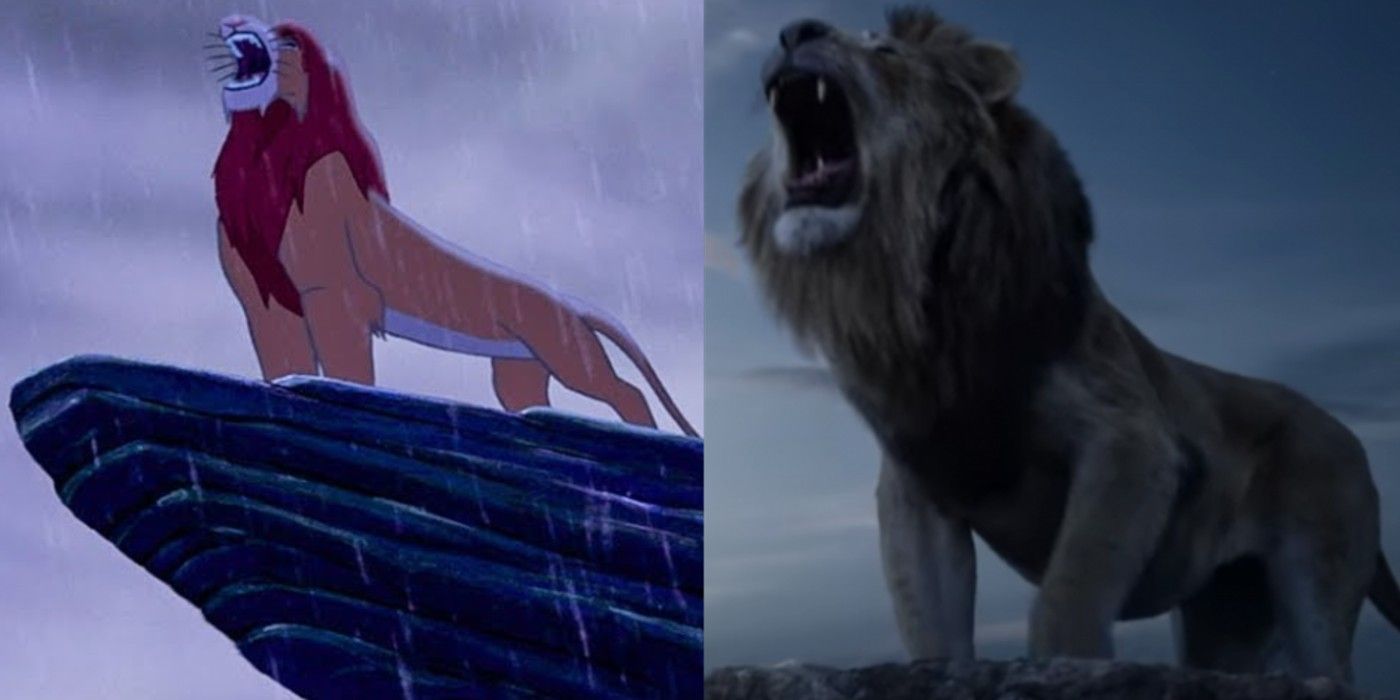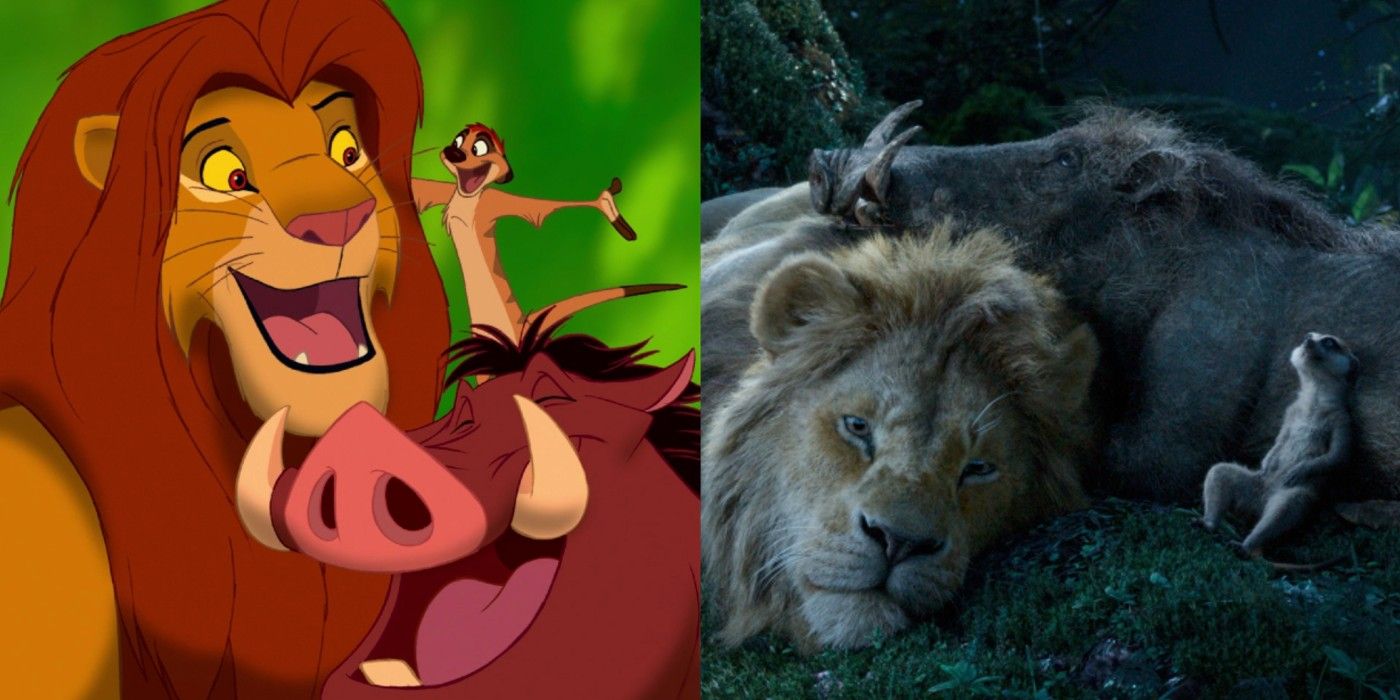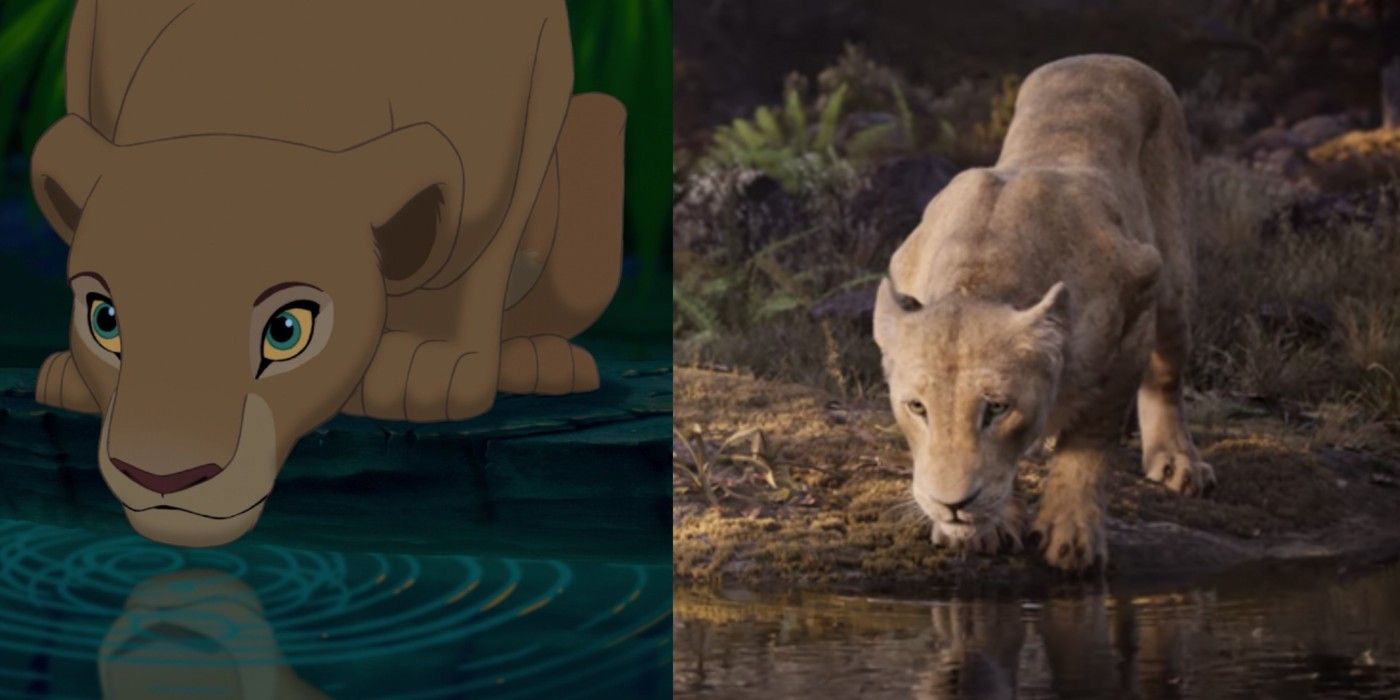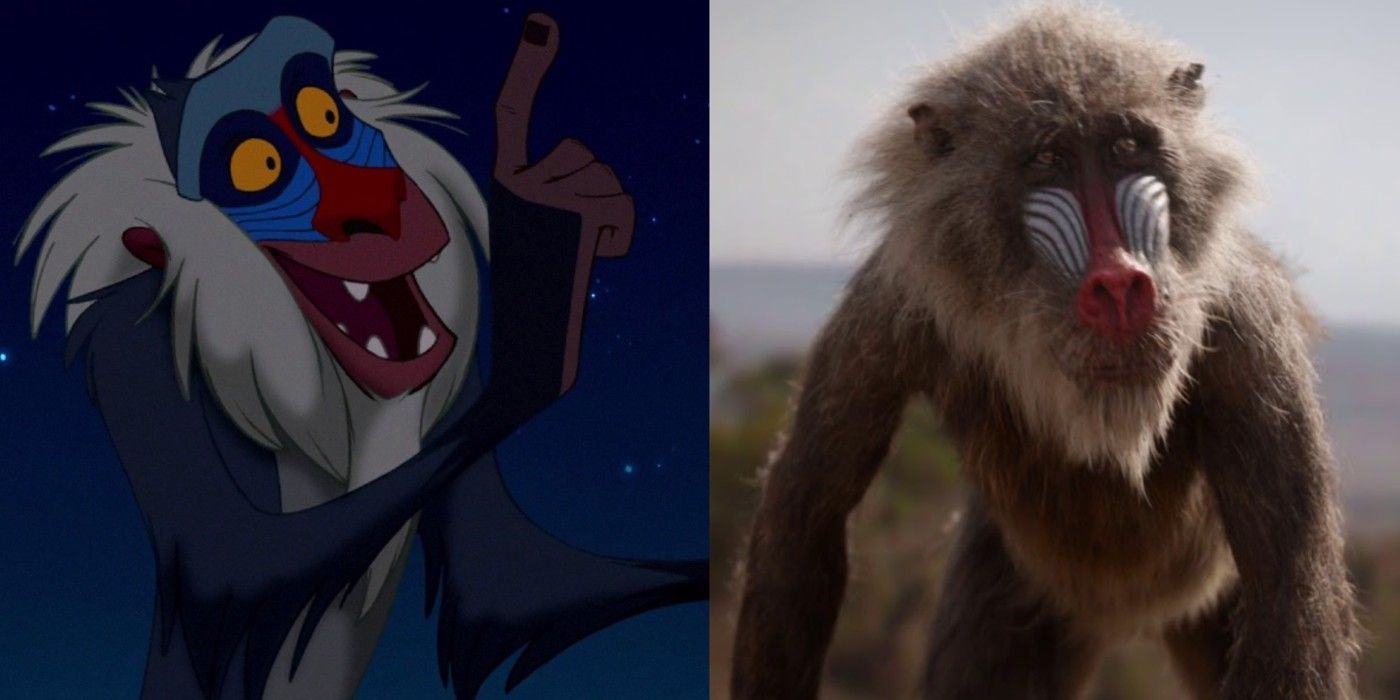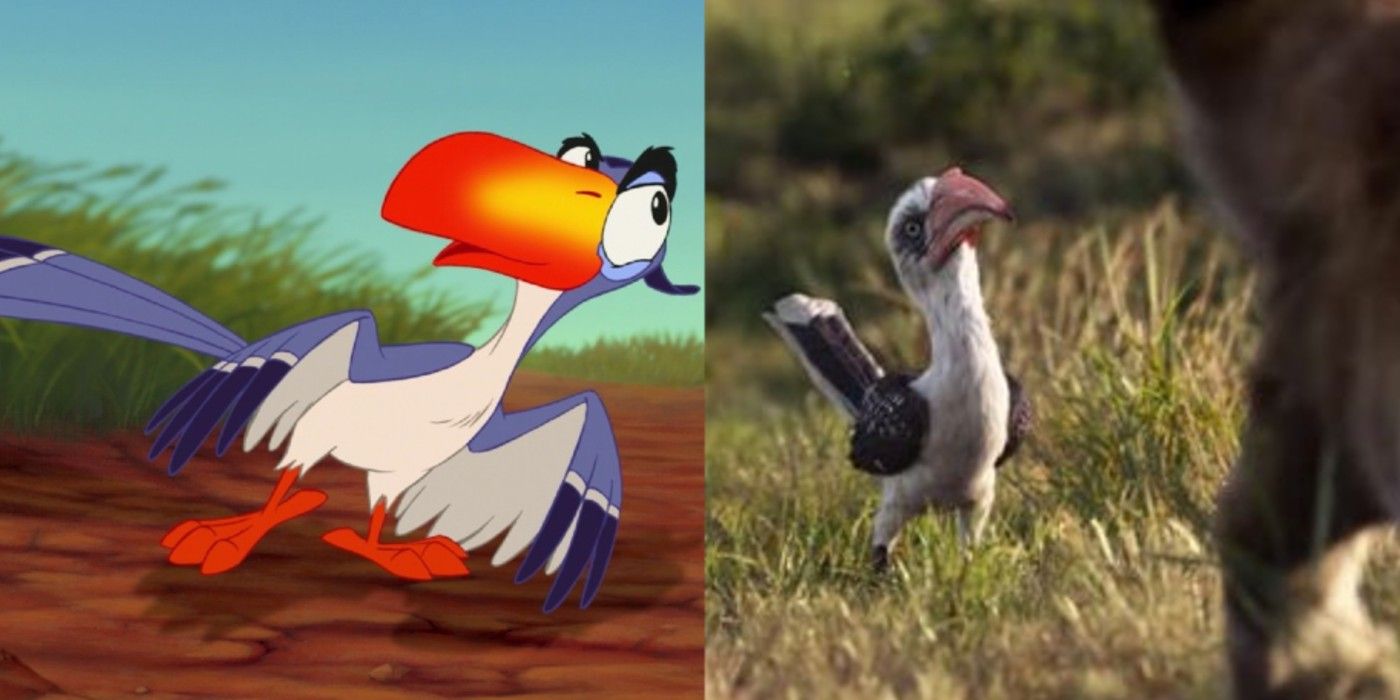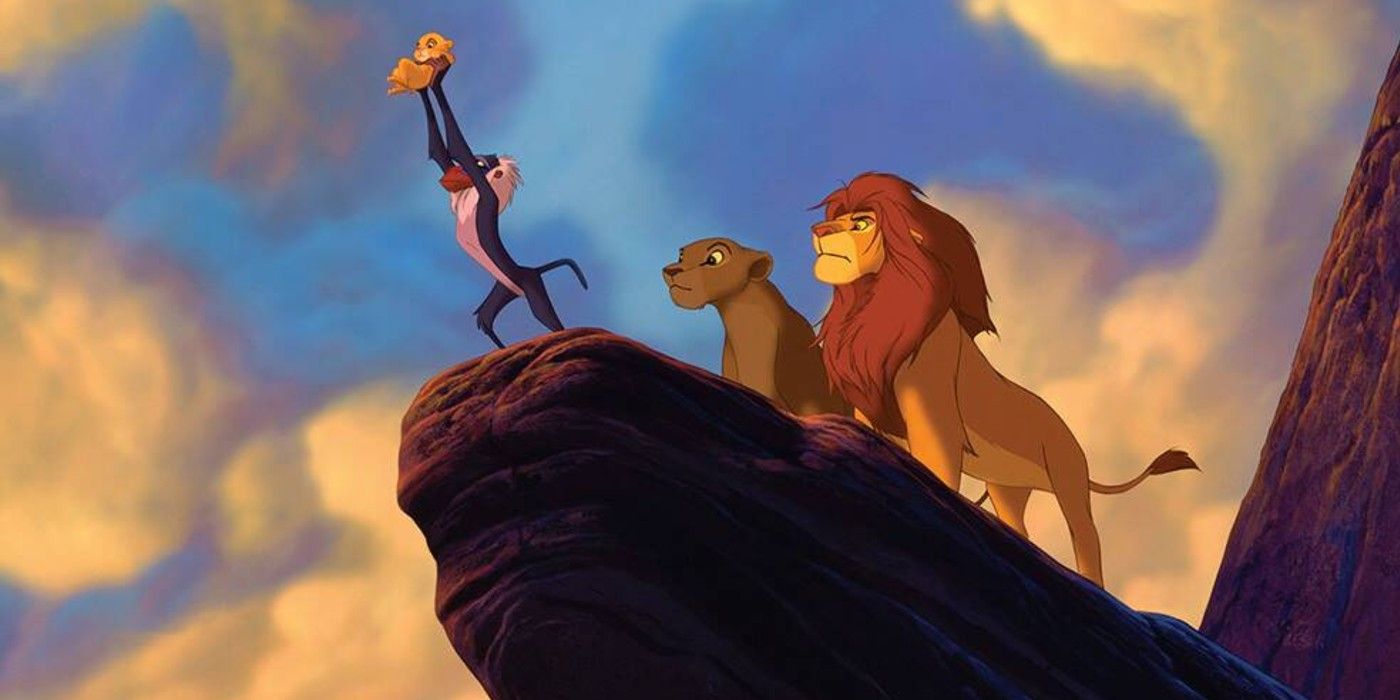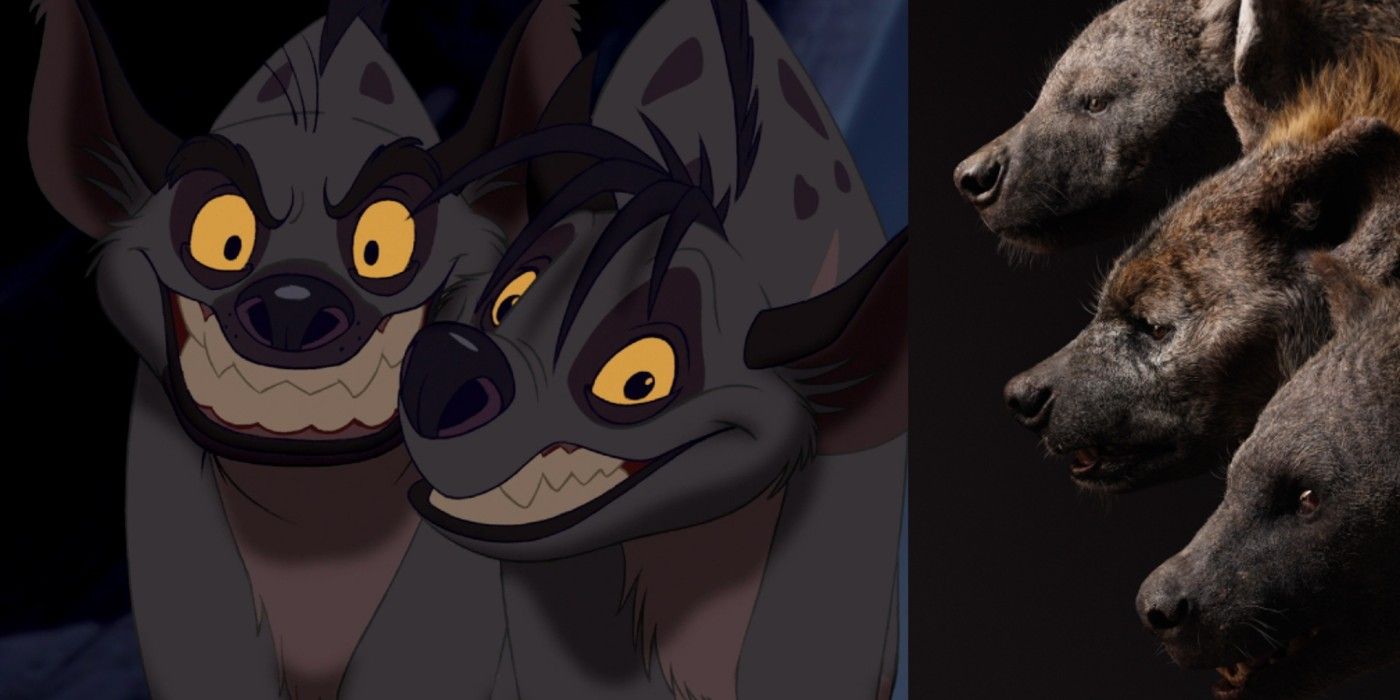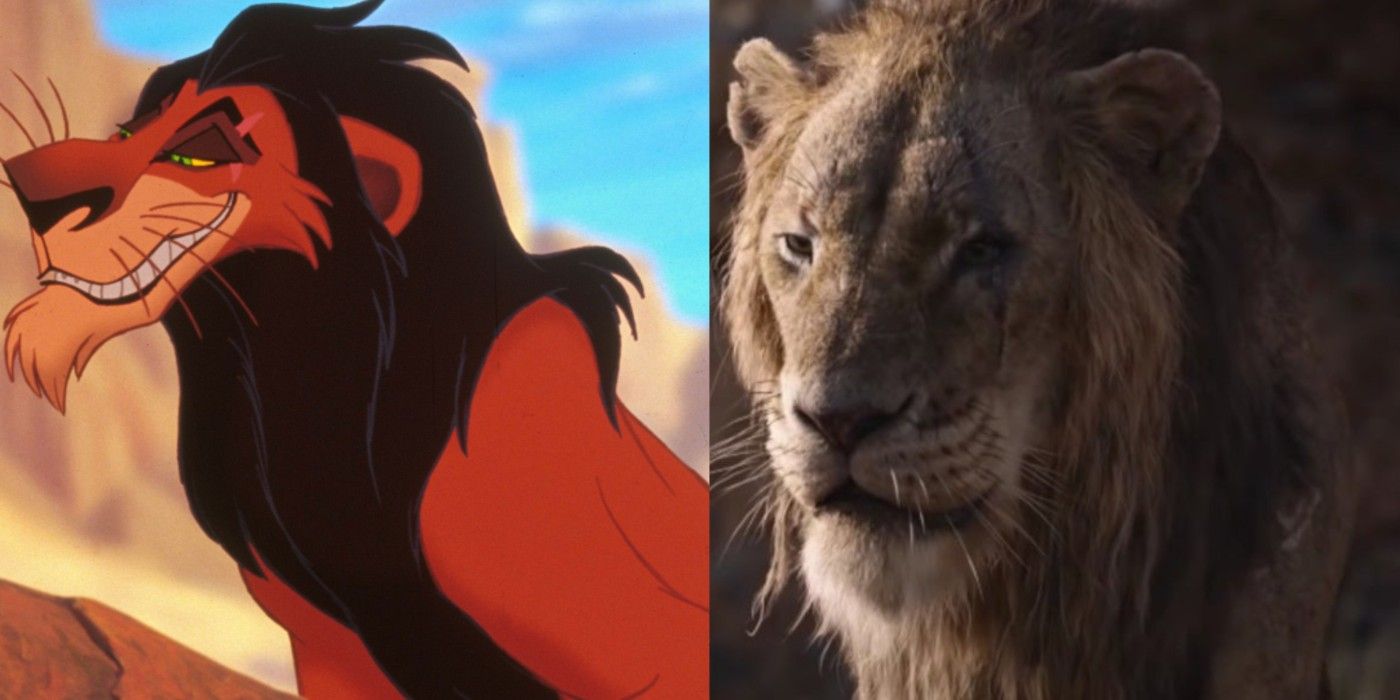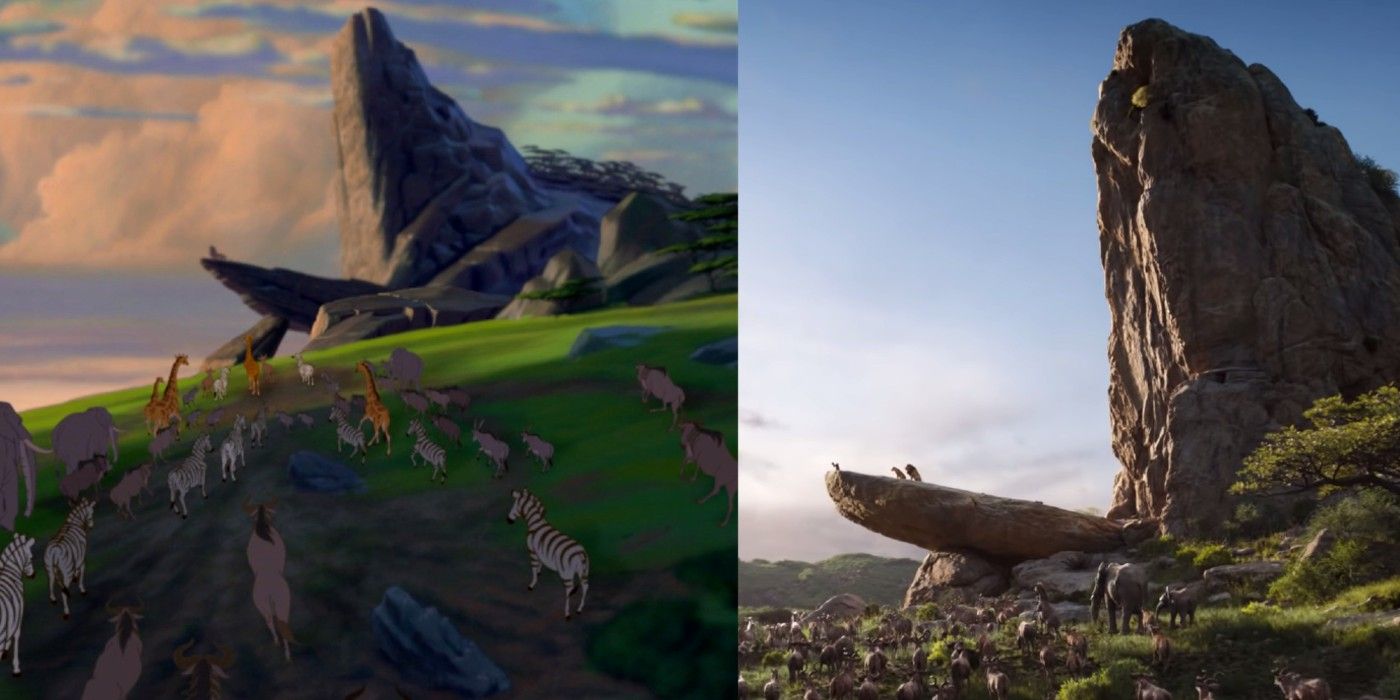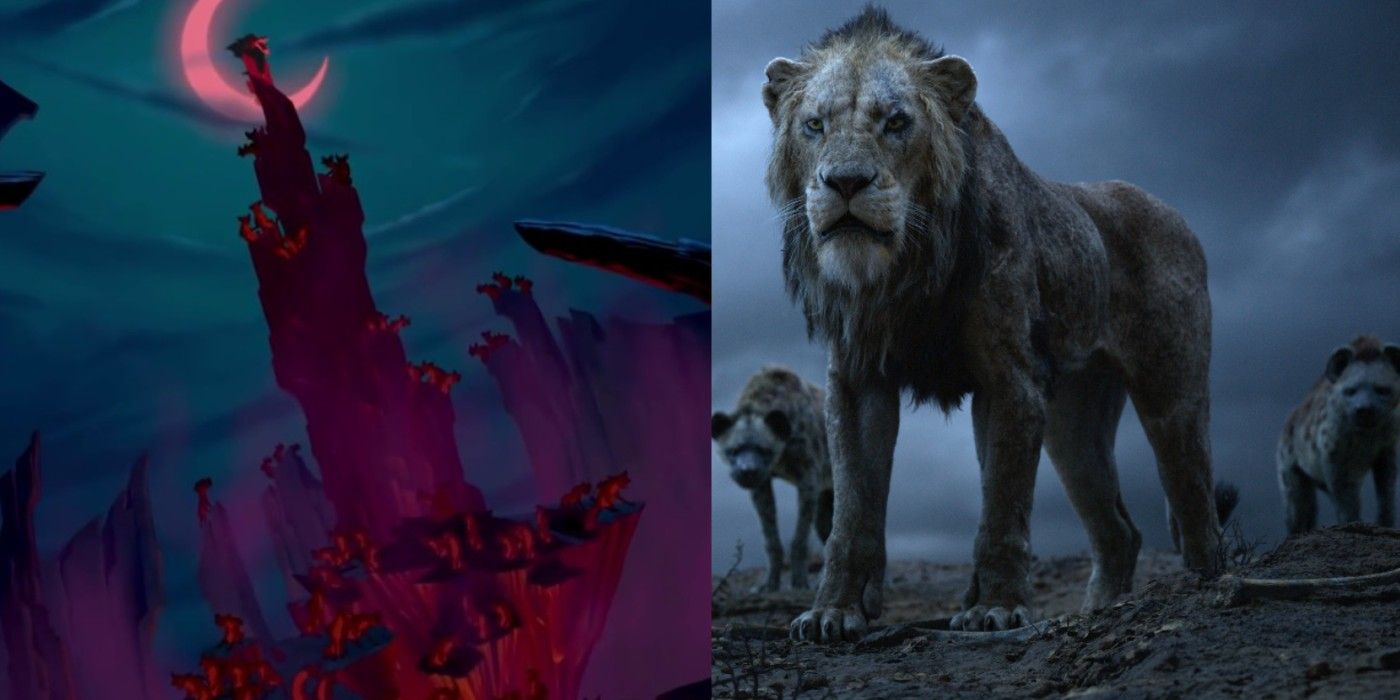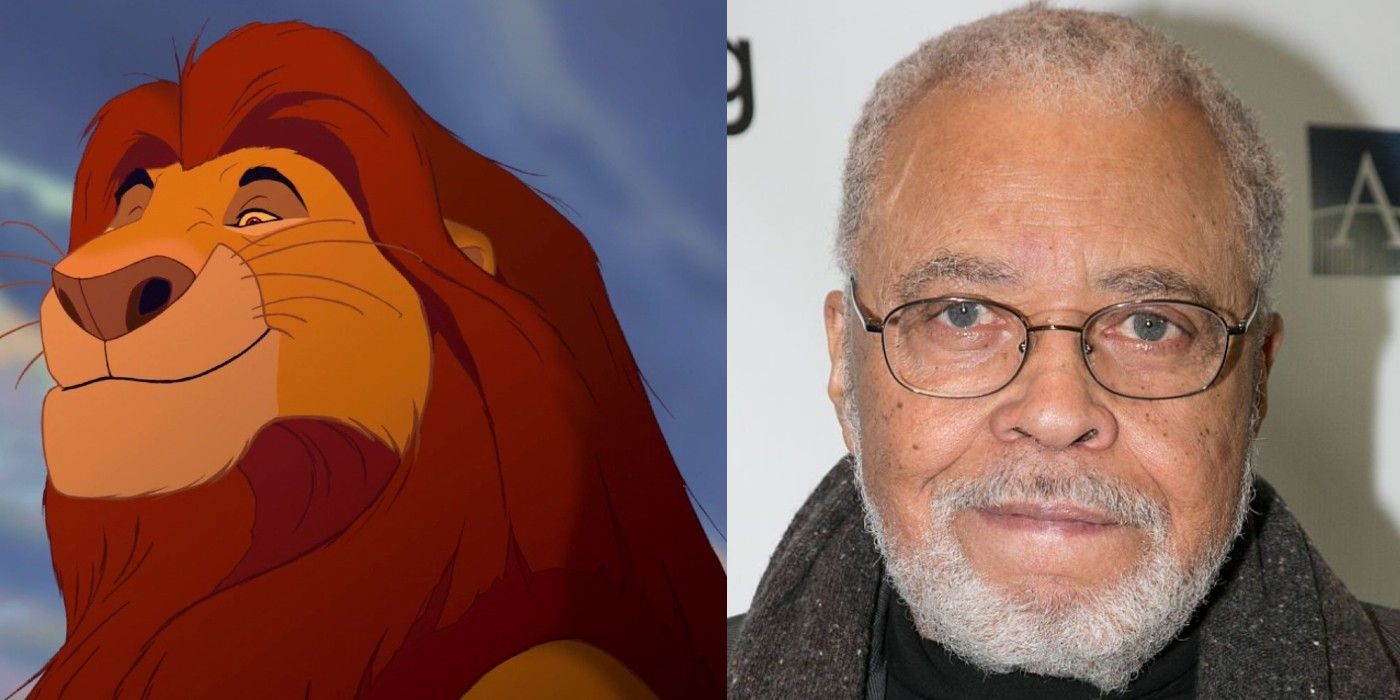Based on the 1994 movie of the same name, Jon Favreau’s remake of The Lion King is an adaptation of the animated musical that helped cement the Renaissance that Disney was enjoying in the ‘90s. Following Simba’s (JD McCrary/Donald Glover) rise from young cub to king of the Pride Lands, The Lion King is a faithful remake of the original movie that looks almost exactly like the original.
But beneath the state-of-the-art digital animation used to bring the animals to photorealistic life, there are some noticeable differences that only older fans of the original would spot. Here are 2 things that the new The Lion King kept the same and 8 things that were done differently.
Difference: Timon And Pumbaa’s Private Paradise
After saving Simba from vultures, Timon and Pumbaa bring him to their own private paradise. Their humble abode is a lush watering hole filled with bugs and plants where the two carefree animals never have to worry about food.
The remake changes the scenery by adding more animals and making the place bigger than before. If Timon and Pumbaa’s animated paradise looked like a private resort in the middle of the desert, their new home looks more like a green commune for outcasts like themselves, their new friends, and a wayward Simba.
Difference: The Lionesses
Simba’s mother and the other lionesses make a return in the remake but now with more to do. Previously, they mostly stayed in the background despite being an important part of Simba’s youth whereas the remake gives them more focus, especially in the final fight against Scar.
Nala’s escape from Pride Rock is shown and she even gets to have a rivalry with Shenzi, who threatened her and Simba in the elephant graveyard when they were just cubs. Sarabi’s backstory is also expanded in the remake, showing hints of her connection with her husband’s deceitful brother.
Difference: Rafiki
The mandrill Rafiki is Mufasa’s eccentric spiritual advisor who has a unique way of imparting life advice. Often hyper-active but always profound, Rafiki was both a source of fun and insight in the original movie.
The remake presents a new version of the same character, only he’s an older and more exhausted version of his animated self. No longer does he crack zany life lessons, instead playing the stereotypical role of a senior-aged sagely advisor seen in any royal drama. He still has his staff, though he only uses it to beat up hyenas.
Difference: Zazu
Mufasa’s trusted spokesperson and advisor is Zazu: a sassy red-billed hornbill with an uptight British persona. For the most part, Zazu’s personality is the same but now he gets to participate more in the movie’s main events.
Instead of being imprisoned and forced to sing for Scar’s pleasure in the third act, Zazu proactively helps Nala escape the Pride Lands and fights alongside Simba in the battle for Pride Rock. That and he’s voiced by John Oliver, the host of Last Week Tonight who also has a longstanding grudge against birds for being terrible sequels to the dinosaurs.
Same: The Story
Outside of the most minuscule of changes, the new The Lion King is a shot-for-shot retread of the original animated movie. Few things are altered in Disney’s loose adaptation of Hamlet but given how much of a classic it’s become, it’s hard not to fault the filmmakers for not fixing something that’s not broken.
This, however, was seen by many critics as a detriment to the remake’s overall quality. By slavishly following almost everything the original movie did, The Lion King is just a CGI repeat of its source material that barely give old fans something new.
Difference: The Hyenas
The hyenas – most notably Shenzi, Banzai, and Ed – are the closest animals Scar has to loyal subjects. In exchange for food and the promise of power, the cackling hyenas do Scar’s dirty work and help him assassinate Mufasa.
The vicious pack returns in the remake, although slightly different. Shenzi’s name is the only returning one but she’s now the pack’s fierce Alpha with a stronger commanding presence than before. She’s flanked by Kamari and Azizi (formerly Banzai and Ed, respectively) who now have recognizably African names and a new comedic tandem.
Difference: Scar
Even today, Scar is remembered for being one of the most delightfully evil villains from Disney’s movies. He may be a power-hungry schemer who lacks the physical strength to claim the throne, but he relishes in being the bad guy.
The remake may give Scar the same dialogue from 1994, but now he’s a more serious threat. No longer smugly flamboyant, the new Scar is more of a bitter aging brute who’s been knocked down a few too many pegs. Also, his main motivation for usurping his older brother is to sleep with Sarabi, who apparently chose Mufasa over him.
Difference: The Animal Kingdom
The biggest change the remake implements is an adherence to realism. Using the most advanced CGI animation and technology, The Lion King depicts the animals and their habitats in the most realistic and natural ways possible.
But because of this, the remake ditches the mystical elements and imaginative sequences that made the original movie a beloved animated classic. For example, a bunch of clouds and some lightning replaced Mufasa’s spirit looking down from the heavens. Simply put, Pride Lands traded its sense of awe for a National Geographic documentary about African wildlife.
Difference: The Music Numbers
Because of its preference for realism over creativity, the remake considerably tones down the impact and magic of the original movie’s iconic musical sequences. A noteworthy example of this is the remake’s version of the villain song “Be Prepared,” which features Scar waltzing around the hyenas instead of riling them up in an over-the-top but appropriate militaristic fashion.
The songs have also been shortened or quickened. Because the remake is more of a drama than a musical, The Lion King focuses more on making the characters’ interactions believable and natural instead of enjoyably stylized.
Same: James Earl Jones
The only voice actor to return from the original cast is James Earl Jones, who provided the voice of Mufasa. Jones says the same profound speeches about the Circle of Life and tells Simba to never forget who he really is, but his delivery is slightly different.
This time around, Mufasa recites his lines in a more nuanced manner, toning down the bombastic side of things. This could also be attributed to the actor’s age, since he’s 88 years old as of this writing. Still, it was nice hearing the one and only Mufasa in cinemas again.

